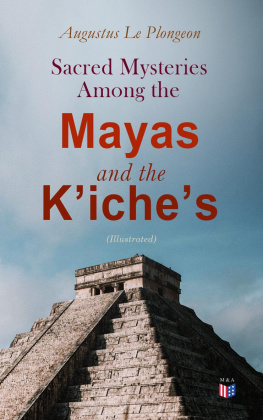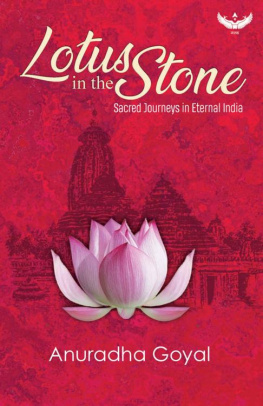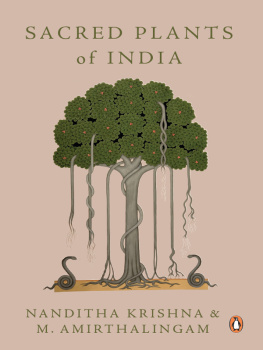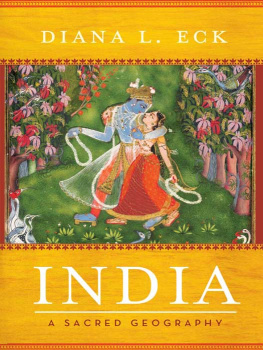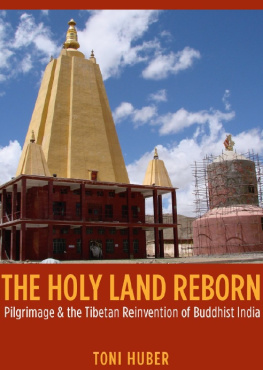Diana L. Eck - India: A Sacred Geography
Here you can read online Diana L. Eck - India: A Sacred Geography full text of the book (entire story) in english for free. Download pdf and epub, get meaning, cover and reviews about this ebook. genre: Religion. Description of the work, (preface) as well as reviews are available. Best literature library LitArk.com created for fans of good reading and offers a wide selection of genres:
Romance novel
Science fiction
Adventure
Detective
Science
History
Home and family
Prose
Art
Politics
Computer
Non-fiction
Religion
Business
Children
Humor
Choose a favorite category and find really read worthwhile books. Enjoy immersion in the world of imagination, feel the emotions of the characters or learn something new for yourself, make an fascinating discovery.

- Book:India: A Sacred Geography
- Author:
- Genre:
- Rating:4 / 5
- Favourites:Add to favourites
- Your mark:
- 80
- 1
- 2
- 3
- 4
- 5
India: A Sacred Geography: summary, description and annotation
We offer to read an annotation, description, summary or preface (depends on what the author of the book "India: A Sacred Geography" wrote himself). If you haven't found the necessary information about the book — write in the comments, we will try to find it.
India: A Sacred Geography — read online for free the complete book (whole text) full work
Below is the text of the book, divided by pages. System saving the place of the last page read, allows you to conveniently read the book "India: A Sacred Geography" online for free, without having to search again every time where you left off. Put a bookmark, and you can go to the page where you finished reading at any time.
Font size:
Interval:
Bookmark:


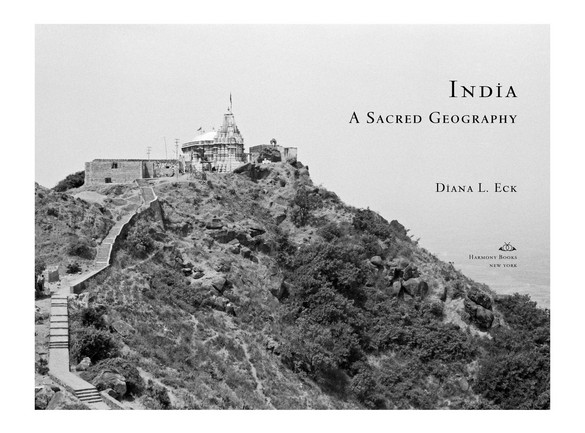
Copyright 2012 by Diana Eck
All rights reserved.
Published in the United States by Harmony Books, an imprint of the Crown Publishing Group, a division of Random House, Inc., New York. www.crownpublishing.com
Harmony Books is a registered trademark and the Harmony Books colophon is a trademark of Random House, Inc.
Library of Congress Cataloging-in-Publication Data
Eck, Diana L.
India : a sacred geography / by Diana L. Eck.1st ed.
p. cm.
1. IndiaReligion. 2. Sacred spaceIndia. 3. HinduismIndia. I. Title. BL2001.3.E25 2011
294.50954dc22 2011009237
eISBN: 978-0-385-53191-7
All photos courtesy of the author, except , Krishna Lifting Mount Govardhan, attributed to Mola Ram (1760-1833)
Maps by C. Scott Walker, Digital Cartography Specialist, Harvard Map Collection; map, , by Michael Gellatly
Jacket design by Nupoor Gordon
Jacket painting: Detail of Radha and Krishna Walking in a Flowering Grove (recto) The Metropolitan Museum of Art, Image source: Art Resource, NY
v3.1
T O D OROTHY E CK AND D OROTHY A USTIN
T HE TWO D OROTHYS, BOTH GIFTS OF G OD
P RONUNCIATION
While Sanskrit is said to be the perfectly made and polished speech of the gods, those of us who are mortal and write in English have to simplify the transliteration for ease of reading. In this book, I have kept diacritical marks to a bare minimum, using only the long mark, or macron, important for the proper pronunciation of short and long vowels.
| a (as allow: Shiva) | (as in father: Ksh) |
| i (as in it: linga) | (as in magazine: dev) |
| u (as in put: Upanishad) | (as in rude: Chitrakt) |
For consonants, I have written both the retroflex s (with a dot under it as in Vinu) and the palatal s (with an accent mark as in iva) as sh, since this is basically how they are pronounced. Other distinctions in this precisely articulated language have also been lost here.
Aspirated consonants (those followed by an h) are pronounced as follows: bh as in clubhouse, Bhagavad Git; dh as in roundhouse, dharma; th as in hothouse (trtha). Two-syllable words are usually accented on the first syllable: Shiva, Vishnu, dharma. In words of more than two syllables, the penultimate syllable is accented if it contains a long vowel (Vishvantha, Purna) or a dipthong (Kurukshetra). Otherwise, the accent is on the antepenultimate (third from last) syllable, as in Ramyana, Mahabhrata, Amarakantaka, Rvana, Lakshmana.
Another issue is that of Sanskrit and Hindi transliteration. The most noticeable difference between Sanskrit and Hindi words is the presence of the final short a in Sanskrit and its absence in Hindi. For example, darshana (seeing the divine image) becomes darshan in Hindi, Ganesha becomes Ganesh, Prayga becomes Prayg. I have not chosen one form exclusively over the other, but have tried to be consistent to the context. For example, if the reference is to a Sanskrit text, I might use Somantha, but on the whole I have kept the form in which these words are most easily recognizable today, which would be Somnth. (Similarly, Badrnth rather than Badarntha, Hardvr, rather than Haridvra, Chitrakt rather than Chitrakta.) Even when I switch back and forth, the reader will soon adjust to the fact that this is simply the complexity of an ancient, yet modern, culture.
Finally, we should note that so many of the major cities of British India have now claimed official Indian names: Mumbai rather than Bombay; Chennai rather than Madras; Kolkata rather than Calcutta; Tniruvananthapuram, rather than Trivandrum. I have used both forms, since both are still in common parlance. I have not used diacritical marks on cities, states, common mountain ranges, or other geographical features, with the exception of rivers.


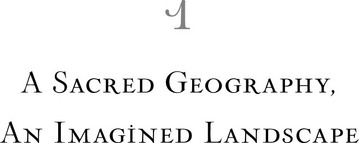
I began thinking about this book in the city of Banras on the River Gang in north India more than twenty-five years ago. I was then writing a book about that great city, a place I presumed to be the most important sacred city of India. Over the centuries, many visitors to Banras, or Vrnas, have compared this city in sanctity and preeminence to Mecca, Jerusalem, and Rome, as the holiest center of Hindu pilgrimage. For example, in the 1860s, a British civil servant, Norman Macleod, wrote effusively, Benares is to the Hindoos what Mecca is to the Mohammedans, and what Jerusalem was to the Jews of old. It is the holy city of Hindostan. I have never seen anything approaching to it as a visible embodiment of religion; nor does anything like it exist on earth. This is a powerful and ancient city, its dense maze of alleyways as dark as its riverfront is radiant. Its morning bathing rites facing the rising sun and its smoking cremation grounds right there along the riverfront are the heartbeat of a city that never fails to leave a lasting imprint on the visitor or pilgrim.
I lived off and on for years in Banras. Even as I investigated the legends and temples of this city, however, I began gradually to understand what most Hindus who visit the city already knowthat Banras does not stand alone as the great center of pilgrimage for Hindus, but is part of an extensive network of pilgrimage places stretching throughout the length and breadth of India. The very names of the temples, the ghts, and the bathing tanks of the city are derived from this broader landscape, just as the names of Ksh and its great Shiva temple of Vishvantha are to be found in pilgrimage places all over India. I began to realize that the entire land of India is a great network of pilgrimage placesreferential, inter-referential, ancient and modern, complex and ever-changing. As a whole, it constitute what would have to be called a sacred geography, as vast and complex as the whole of the subcontinent. In this wider network is pilgrimage, nothing, not even the great city of Banras, stands alone, but rather everything is part of a living, storied, and intricately connected landscape.
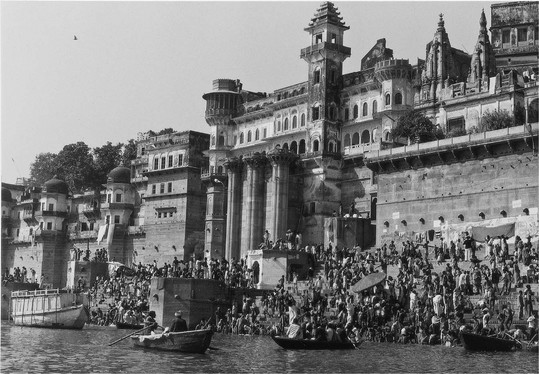
The bathing ghts of Kshs great riverfront
At first, I resisted the complexities of this peripheral vision, still interested as I was in establishing what makes this one place special, different from the rest. It became clear to me, however, that I could understand Banras only in the context of a much wider system of meanings in which significance is marked not by uniqueness, but by multiplicity, even in the great city of Ksh. Everything about
Font size:
Interval:
Bookmark:
Similar books «India: A Sacred Geography»
Look at similar books to India: A Sacred Geography. We have selected literature similar in name and meaning in the hope of providing readers with more options to find new, interesting, not yet read works.
Discussion, reviews of the book India: A Sacred Geography and just readers' own opinions. Leave your comments, write what you think about the work, its meaning or the main characters. Specify what exactly you liked and what you didn't like, and why you think so.




